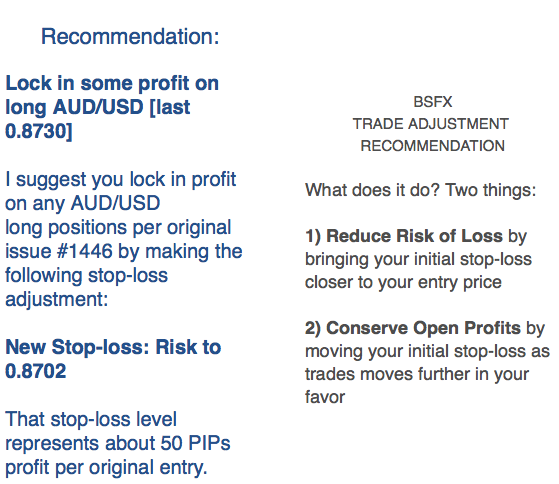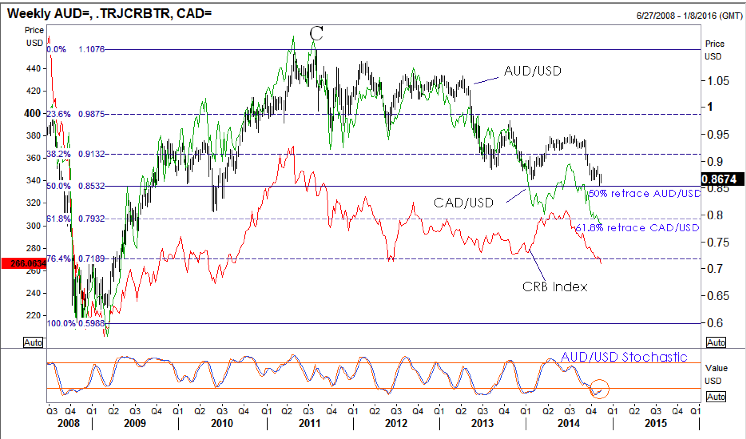Currency
 Jim Rogers, American businessman, investor and author, joins RT for a hard hitting interview where he explains that Russian President Vladimir Putin is on the right line over the extreme threat the US Dollar is under as China, Russia and many other countries in the world run from the US Greenback due to America being the “largest debtor nation in world history” which is getting worse and worse.
Jim Rogers, American businessman, investor and author, joins RT for a hard hitting interview where he explains that Russian President Vladimir Putin is on the right line over the extreme threat the US Dollar is under as China, Russia and many other countries in the world run from the US Greenback due to America being the “largest debtor nation in world history” which is getting worse and worse.
Rogers explains that the Dollar is a “seriously flawed currency” and nations need something else to use, which is why the recent trade deals being made by a variety of countries to bypass the dollar and trade using their own currencies is yet another nail in the dollar’s coffin.
Ed Note: For a short term Bullish Trading view of the Dollar read the top 1/2 of this article HERE

— Is the US Next?
It’s been quite a month.
In late October Japan, despite a year of fairly aggressive quantitative easing, dropped back into recession and concluded that even easier money was the cure for its ills. It announced a debt monetization plan of almost science-fictional proportions in which the amount of new yen to be created, as a percentage of GDP, will be equivalent to $3 trillion a year in the US. See Reactions to BoJ’s Kuroda’s Stunning, Doubled-Down QE ‘Experiment’
Then the European Central Bank, after years of operating in Germanic tight-money mode, finally accepted that a shrinking money supply was pushing the weaker eurozone countries into depression. On November 21 it threw caution to the wind and began buying up (by the sound of it) pretty much every stray piece of paper that’s blowing in the Continental wind. See
Mario Draghi Says E.C.B. Will ‘Do What We Must’ to Stoke Inflation
Most recently China, whose massive purchases of raw materials became the engine of the post-2008 recovery, discovered that much of the debt incurred to build those entire new cities is about as likely to be paid back as a typical subprime mortgage circa 2007. So it announced a surprise interest rate cut and a promise to do much more if necessary. See China’s surprise rate cut shows how freaked out the government is by the slowdown and Fear Of “Surge In Debt Defaults, Business Failures And Job Losses” Means Many More Chinese Rate Cuts
These are not the actions of economies in sustainable recovery but of countries falling into an abyss. Such open-ended offerings to the market gods are explicitly designed to get the juices of stock traders flowing. But so far that’s all they’ve done. Here’s a chart from Zero Hedge showing how each year’s initial GDP optimism has faded even while equity prices have continued to rise.

So, two questions:
1) Will stepped-up debt monetization and interest rate reductions succeed where the past batch failed? Not likely, for both practical and theoretical reasons. There’s just too much debt outstanding to allow normal market mechanisms to produce sustainable growth. There’s simply nothing that Italy or Japan can build with borrowed money that will generate a positive return, given how much they already owe. So those descending GDP estimate lines will soon be joined by a new one with the same arc for 2015.
2) Can the US remain aloof from the carnage taking place all around it? Also not likely, since the actions being taking by our trading partners all coalesce around a single data point, which is a more expensive dollar. The US has had a relatively smooth few years because Fed policy was relatively easy and the dollar, as a result, was relatively weak versus the yen and euro. Now both of those trends have reversed in a big way. Here’s the dollar versus the world’s other main currencies over the past year:

Where the previously-strong euro and yen pushed Europe and Japan into recession, a strong dollar will impose the same headwind on the US in 2015. So there’s a decent chance that a year from now we’ll be faced with a world in which debt monetization has failed in three of the four major economies and a strong currency has sucker-punched the last one standing. And the only politically-acceptable response will be more of the same. Why isn’t gold soaring?


NEW YORK (MarketWatch) — The dollar surrendered the gains made against the yen during the Asian session Thursday, after gaining more than 170 basis points in less than 32 hours and surpassing multiple seven-year highs.
The greenback USDJPY, +0.05% traded at ¥117.96, after rising as high as ¥118.97, as it continued to revisit the highs from the summer of 2007, when investors scrambled to the perceived safety of the yen as U.S. credit markets seized up.
And analysts believe this is only a temporary pause in the dollar-yen’s inexorable march upward, and that volatility will increase in equal measure as speculators continue to pile into the currency pair.
“The higher it goes, the more volatile its going to be,” said Boris Schlossberg, managing director of FX strategy at BK Asset Management.
Volatility broadly characterized G-10 currency trading Thursday, as the euro EURUSD, -0.11% also swung wildly, plummeting to $1.2505 after the eurozone flash PMI for November fell to a 16-month low. It soon recovered to $1.2563, slightly above its Wednesday afternoon price of $1.2545. (Read: Eurozone PMI falls to 16-month low in November)

14 November 2014/9:50 a.m. ET
The chart below compares AUD/USD, CAD/USD, and the Commodities Index. Three points to make: 1) Aussie oscillators in “oversold territory” and turning up (see bottom pane in the chart below); 2) Aussie is testing it 50% retracement level going back to late 2008; and 3) CAD/USD is testing its 61.8% retracement level going back to the 2008 (also oversold weekly but it is not on this chart). This all may mean nothing. Or it may mean now that everyone and their mothers are so darn bearish on commodities and comdols we should be open to the idea of a correction higher…that’s all.

Tweak Open Trades to Maximize Profit and Minimize Loss
Good news: We’ve extended your free “Insider’s Look” at Black Swan Forex (BSFX) through Friday.
That means you’ll get two more days of trade alerts, updates and analysis. It also means you’ll get to see how Wednesday’s activity plays out.
To that point, here is a summary of open positions:

You added a new EUR/USD position, which is working higher this morning.
You were stopped out of a GBP/USD trade with a 50-pip loss yesterday.
Fortunately, though, that loss is more than covered with the profit I recommended locking in by adjusting stop-loss levels on open AUD/USD and USD/CAD trades on Wednesday. And in fact, during a volatile session for the Aussie overnight, we were stopped out with a 50-pip profit.
And that brings me to the subject of today’s missive:
Optimize Success by Adjusting Trades on the Fly
I always recommend you use a simple stop-loss to manage risk in every trade. I cannot stress it enough – it is easily the difference between success and failure, at least for me.
Moreover, it is vitally important to determine your stop-loss before you enter a trade. Two reasons:
- You are most objective about the trade before you have actually made the trade. Your objectivity tends to disappear after you enter a trade. Your mind tends to block, or rationalize away, negative information that may suggest it’s time to exit the position.
- Your risk tolerance should determine whether you place a trade in the first place. Look for a new trade I if your expected risk does not make sense relative to your expected reward.
Place that stop and place it first. Don’t rationalize and don’t risk too much to make too little.
Furthermore, adjust your stop-losses as needed.
Adjusting your stop-loss can be the difference between a little success and a lotta success.
Here’s what I mean:
Imagine you purchased a firearm for home defense. If you learn how to handle that firearm properly, you’ll be far better at protecting your home than if you just left the gun sitting untouched in its case on your nightstand with its receipt.
Just like a firearm, a stop-loss is a tool that will protect you better if you know how to use it.
There come times when you’re in a trade and need to make decisions on the fly. Chart set-ups change, the market mood changes, volatility increases or decreases.
Protect yourself from these things with stop-loss adjustments. I provide updates and adjustments, as needed, throughout every trade. Here’s an example from yesterday:

Here’s my point:
Making adjustments on the fly helps you conserve profits and reduce risk of loss.
Remember: trading is about stacking the odds of success in your favor to help you win over time. This comes with a focus on process, not profits. A stop-loss is perhaps the most important part of the process.
But make no mistake: the stop-loss can be frustrating.
Stop-losses are not perfect, and they can knock you out of a trade that otherwise would have validated your bet and made you money.
But the moment you jettison your stop-loss tactic is the moment you find trouble. It’s a sign your ego is getting in the way of process, as I discussed yesterday.
Your ego always remembers missed opportunities, but tends to forget when your stop-loss saved your bacon from a huge loss or blown account.
Black Swan Forex provides stop-losses for subscribers in every trading idea. And it provides stop-loss adjustments to reduce risk or lock in open profit.
I truly believe this is why its winning trades are 170 percent larger than its losing trades – because of the initial focus on risk and subsequent adjustments.
We provide the tools you need for success.
Protect yourself and win with Black Swan Forex.
Best,
Jack
P.S. If you missed yesterday’s letter on “Knowing When to Jump Ship” — How to Manage Risk Easily and Effectively — click here to learn about 1 simple tactic that eludes most traders.













